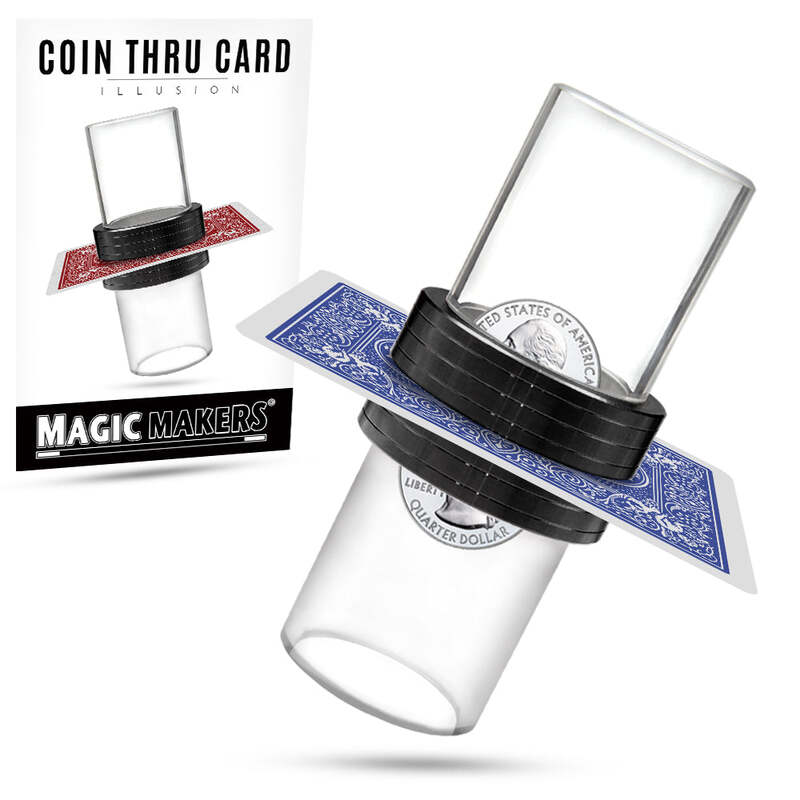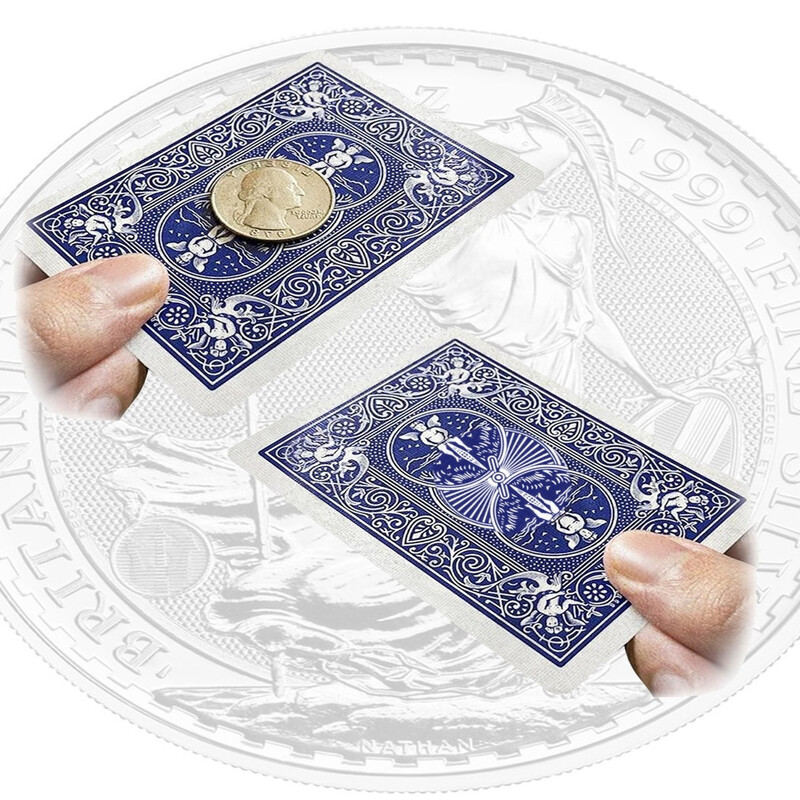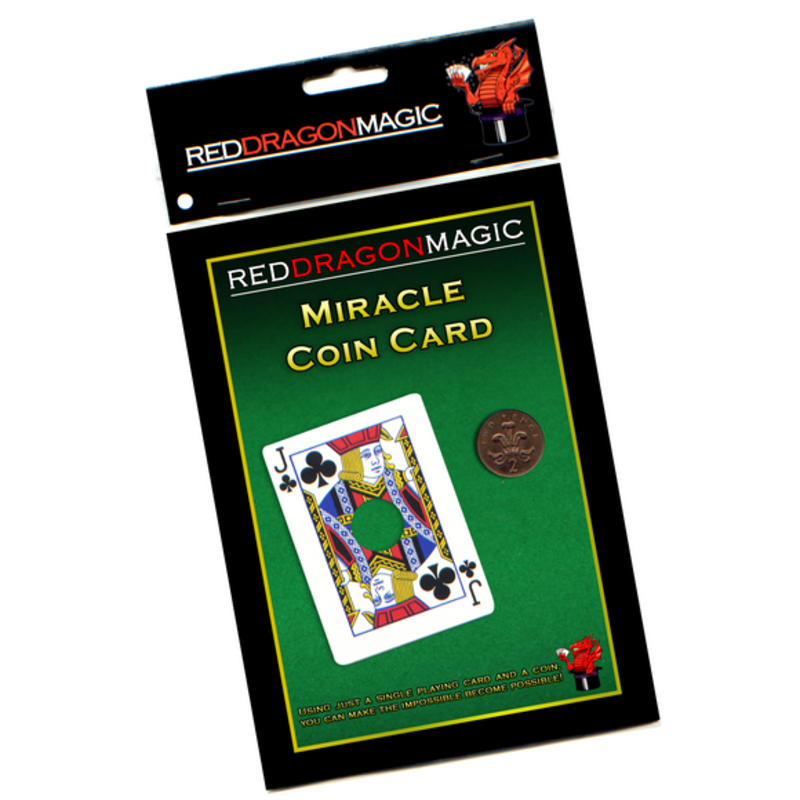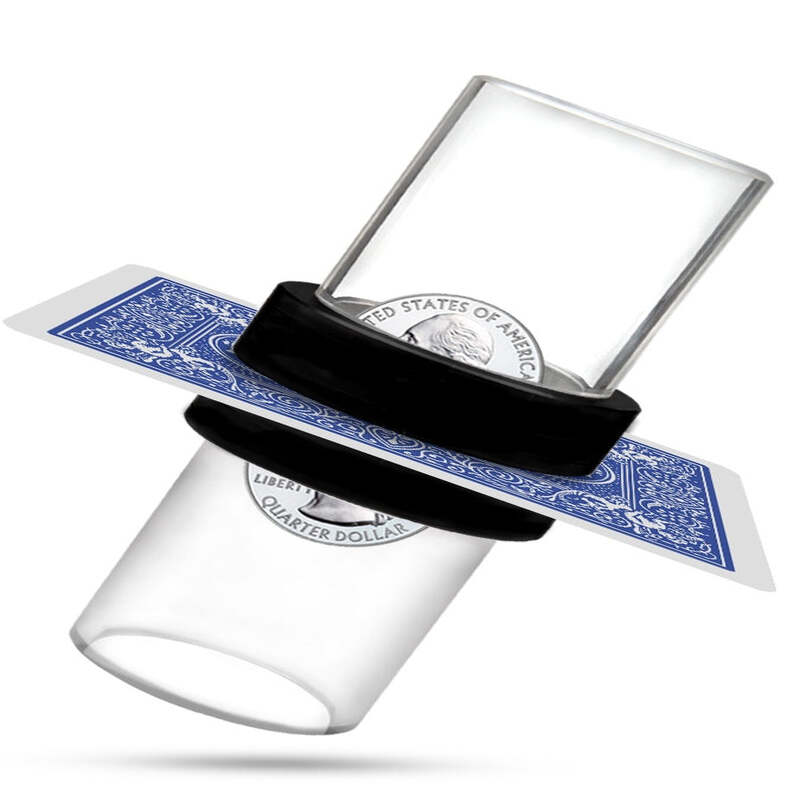Coin Magic: A Fascinating Subgenre
Coin magic captures the imagination like few other art forms. It involves skills that create wonder and amazement in an audience. A coin’s small size and ubiquity make it an excellent prop for magicians. With just a flick of the wrists or a gesture, coins appear, disappear, and even transform. This subgenre of magic has deep historical roots. Artists like David Roth and T. Nelson Downs have elevated coin magic through their mastery and creativity.
Learning coin magic opens a door to a world of endless possibilities. It empowers you to perform miracles with everyday objects. For those eager to explore this fascinating subgenre, starting with the basics is key. Simple techniques, like the finger palm and lapping, pave the way to mastering more complex stunts. As you grow from beginner to seasoned performer, the card to coin magic trick may become part of your repertoire. Yet, it all begins with a willingness to delve into the art and start practicing. Short and focused practice sessions can lead to becoming a skilled practitioner of coin magic.

Essential Sleights for Coin Magic
To excel in coin magic, mastering fundamental sleights is crucial. These techniques are the building blocks for most coin tricks, including the card to coin magic trick, providing a foundation for beginner magicians to build upon as they progress in their craft.
The Classic Finger Palm
The finger palm is a staple move in coin magic. It’s invisible to the audience when done correctly. Here’s how to practice it:
- Place a coin across the lower joints of your middle fingers.
- Curl your fingers, lightly gripping the coin.
- Keep your hand relaxed at your side for a natural look.
With the finger palm, you can make a coin appear from thin air or vanish instantly. It’s all about how you move your hand. Practice this move until it becomes second nature. Remember: The goal is to hold the coin securely without it being detectable.
The Art of Lapping
Lapping is another essential technique for coin magicians. It allows you to make coins disappear by dropping them into your lap. To lap successfully:
- Sit at a table and casually drop a coin from the edge.
- As the coin falls, let it land in your lap, unseen.
- Continue the motion of your hand as if the coin is still there.
Maintaining the illusion requires a steady hand and confidence. Once mastered, lapping can be a powerful tool in your coin magic arsenal. Together, the finger palm and lapping form the core skills necessary for impressive coin tricks.
Both of these sleights demand practice, but with each session, you’ll move closer to mastering the nuanced art of coin magic that wows audiences.

Beginner Tricks: Starting with the Basics
Before ambitious tricks like the card to coin magic trick become second nature, starting with basic coin tricks is essential. These simple effects set the stage for developing your skills and building confidence. Here are two classic examples that any beginner can master with a bit of practice.
The Timeless ‘Coin from Ear’ Illusion
This trick is a delightful way to introduce someone to magic. It’s easy to learn and always receives a smile.
- Use a coin and the finger palm technique.
- Reach towards someone’s ear while keeping the coin hidden in your hand.
- Pretend to pull the coin from behind their ear.
The key is to distract them with your other hand. This creates the illusion of the coin magically appearing. Always maintain eye contact to keep their attention focused away from the secret move.
The Disappearing Coin Routine
This trick makes a coin vanish right before the spectator’s eyes. It’s a simple yet impressive routine that involves misdirection and sleight of hand.
- Hold a coin in your dominant hand.
- Pretend to rub the coin into your elbow.
- Drop it ‘accidentally’ to create a diversion.
- Pick it up and use the lapping technique to catch it in your lap.
- Show your empty hand, and the coin appears to have vanished.
Practice the movement of your hands to ensure the trick looks smooth. With repetition, the disappearance will seem natural to the audience. Remember, confidence is crucial for pulling this off successfully.
Intermediate Coin to Card Magic Techniques
Once you’ve gained confidence with basic coin tricks, it’s time to step up to intermediate techniques. These methods involve more finesse and a deeper understanding of timing and audience perception. This is crucial when venturing into coin to card magic tricks.
Transitioning between Objects: Coins to Cards
Transitioning from a coin to a card requires smooth sleight of hand and misdirection. Here’s a basic approach:
- Start with the coin in your finger palm.
- Display a card in your other hand.
- As you move both hands together, use misdirection to swap the coin with the card.
- Practice this until the exchange is seamless and the audience is none the wiser.
This coin to card transition is a fantastic way to merge two powerful aspects of magic. It opens up countless possibilities for creating memorable illusions.
Adding a Twist to Classic Magic
Incorporating coins into your card magic routines can add an unexpected twist to your act. Try this simple effect:
- Show a card and announce you will make it change.
- Cover the card with your hand and introduce a coin, keeping it hidden initially.
- With a magical gesture, reveal the coin where the card once was.
This move will surprise your audience and demonstrate your versatility as a magician. As in all magic, practice is key to making the illusion convincing. Don’t rush the performance, and always maintain a narrative that keeps the audience engaged. Adding these intermediate coin to card magic techniques to your repertoire will undoubtedly elevate your performance and leave spectators in awe.
Mentalism with Coins: Reading Minds
Mentalism is thrilling, leaving spectators in awe of what seems like psychic abilities. Coin magic mixes well with mentalism, creating effects that suggest you can read thoughts. With coins, a mentalist can perform small miracles. Trickery here is subtle, needing more fines with words than hands.
The Mind-Reading Coins Trick
Here’s an easy mentalism trick using coins:
- Secretly predict a coin that someone will choose.
- Lay different coins on a table.
- Use clever language to guide their choice.
- Reveal your prediction matches their selection.
This trick relies on ‘Magician’s Choice,’ a technique that steers choices with wording. Practice it well to ensure your prediction seems like mind-reading.
The Power of Equivoque in Mentalism
Equivoque is crucial for mentalism. It’s about offering choices that lead to a single outcome. Here’s how to use it in your routines:
- Understand your script for any situation.
- Present options so each choice appears free but is controlled.
- Use confident and clear language.
- Steer the spectator as planned, making them think it was their idea.
Equivoque often baffles onlookers, especially when combined with a card to coin magic trick. In essence, it’s about directing thought while appearing to read minds.

Practicing for Perfection
To become adept at the card to coin magic trick, practice is paramount. It refines skills and builds proficiency, allowing magicians to perform flawlessly.
Pro Tips from Professional Magicians
Magicians with years of experience recommend continuous practice. Here are some tips:
- Dedicate time daily to practice coin magic techniques.
- Use a variety of coins to adapt to different sleight of hand challenges.
- Record practices to review techniques and progress.
- Perform for friends or family to gain feedback and build confidence.
Follow these tips, and soon, performing magic will feel as natural as breathing.
Building Muscle Memory for Sleight of Hand
Achieving smooth sleights involves developing muscle memory. Here’s how to work on it:
- Repeat fundamental moves like the finger palm and lapping many times.
- Practice slowly at first, then gradually increase speed without losing precision.
- Mirror practice is key to see how movements appear to an audience.
- Use everyday situations to discreetly practice palming coins.
This repetition will cement sleights into your hands’ memory, making difficult tricks second nature.
Presenting Your Magic: Engagement and Showmanship
Magic is more than just the tricks; it’s about how you present them. For magicians, especially when performing the card to coin magic trick, engaging the audience is key. This goes beyond simply doing sleights; it requires showmanship and the ability to connect with spectators. An act’s success lies as much in the performance as in the illusion itself. Whether it’s a close-up magic show or a grand stage performance, your presentation must captivate and entertain.
Creating a Narrative for Your Act
Every good magic act tells a story. As you perform the card to coin magic trick, weave a narrative that captures imagination. Start by setting up a scenario that involves your audience. Perhaps the coin and card represent different eras in time, or hold sentimental value. By giving context, you draw in your viewers, giving them a reason to care about the trick’s outcome. This storytelling element is what transforms a simple trick into a memorable experience.
Captivating Your Audience with Close-Up Magic
Close-up magic thrives on intimacy. Use the card to coin magic trick to build a personal connection. Hold your audience’s gaze, speak clearly, and let your enthusiasm show. Let them feel the wonder of the coin transformation firsthand. If possible, involve them directly, perhaps by letting them hold the coin or card. This level of engagement makes each trick feel special and unique, imprinting the magic in their memories long after the performance ends.
